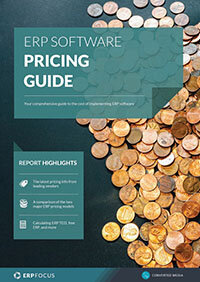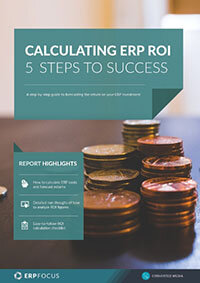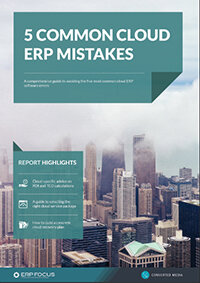Four of the most expensive ERP mistakes you could make
ERP utilization at the enterprise level is not for the faint of heart. This doesn’t mean that successful large-scale implementations don’t exist, but speaking historically, more ERP systems fail and abort during the first three years of launch than any other complex enterprise system type.
Of course, it doesn’t have to be that way. In the past, the hard fact was that in order to realize the true value of ERP over time, one first had to accept that ‘everything’ associated with how/why an enterprise moved, manipulated, thought, created, or responded to business information had to be subordinate to the operation of the system itself. To be blunt, many enterprises didn’t typically harbor the patience, money, resources, or the management sophistication to get the job done properly.
Recommended reading: calculate the cost of ERP ownership as accurately as possible using our comprehensive ERP pricing guide.
Today, however, things are a bit easier to deal with given cloud systems that directly support ERP implementations using automated customizations, monitoring scripts, management of security elements, and storage processes. However, even then, if one doesn’t provide for a proper level of planning and persistence, an ERP platform can begin to exhibit fatal - and very costly - characteristics quite quickly.
Here are four mistakes that can cause your ERP costs to soar
1. Failing to understand the meaning of internal KPIs
Interestingly, many enterprises fail to measure and validate their own internal key performance indicators. While many consider outward-facing metrics to be the most important KPIs to a commercial enterprise it’s what goes on under the hood that counts more. For example, one of the more prevalent failures here has to do with ERP cost creep.
ERP characteristics afford enterprises an ability to generate significant production heat, since suddenly the system can ‘see’, push or direct product information in real-time. Therefore, if management is not focusing on the ‘cost of things’ overwrought production requirements can eat a company up from the inside out. So, best that you behave more like a lizard moving its eyes in opposite directions, rather than a wolf focused on only prey at a time.
2. Failing to staff the project properly
Even in today’s cloud environment, ERP platforms can consume FTE resources at a rapid rate. Therefore, if management is not prescient enough to plan and staff up properly to deal with growth issues, sooner or later the system will fall to its knees and end up being an expensive waste of time and money due to a dearth of people who are available to do what needs to be done. Consequently, it’s most prudent to over, rather than under-staff, the resources side of an ERP project plan, even though on paper, it may appear to be illogical or too costly.
3. Failing to establish formal data standards
ERP is all about identifying, manipulating, delivering, and storing data – right? However, many enterprises fail to employ proper internal standards from the outset that, over time, can create enormous data furballs that skew the results of business analysis; or worse, hose a system up to the degree that gibberish begins to appear throughout the reporting stage. These impacts create unexpected, and difficult to recover from, cost burdens that can drive an operation out of budget without notice.
Define and employ proper data standards from the beginning of your effort, and you’ll avoid this pitfall throughout your platform’s lifecycle.
4. Failing to establish formal failure/recovery plans
This last failure may be the best kept secret in any enterprise system, but particularly when you’re depending on an ERP platform to operate properly every day. The problems here is that many folks don’t want to seriously consider the impacts of what might happen during a disaster, or other type of commercial turbulence.
Unfortunately, things go wrong, and failing to plan properly can put a company in a ditch in the blink of an eye. Consequently, whether you’re launching a new system, or operating a legacy ERP, failure/recovery planning is a critical helpmate that can either save a company, or if not, look up to see all of your work go up in digital smoke.
Free white paper

ERP Software Pricing Guide
Get the latest pricing information on over 80 popular ERP systems, and learn how to budget for your ERP project in our free guide

Featured white papers
-

ERP Software Pricing Guide
Get the latest pricing information on over 80 popular ERP systems, and learn how to budget for your ERP project in our free guide
Download -

Calculating ERP ROI: 5 steps to success
Calculate your new ERP's financial benefits with this comprehensive guide
Download -

Five common cloud ERP mistakes
Get your comprehensive guide to avoiding the five most common cloud ERP errors
Download
Related articles
-

28 cost elements to include in your ERP TCO calculation
With differing definitions and more hidden costs than you can shake a stick at, ERP TCO can be a ...
-

Secret KPI: Why Your ERP Implementation Team Matters More Than Software
Learn how Godlan ensures successful ERP implementation for manufacturers with proven strategies &...
-

Top 10 ERP selection criteria (including checklist)
The most important ERP selection criteria you should keep in mind during your selection process.

